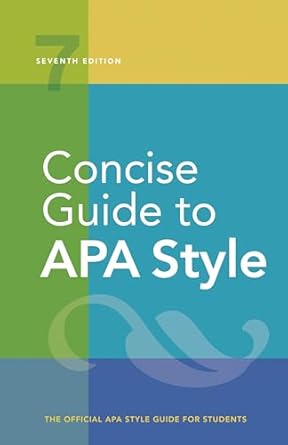[toc]
apa style guide mastering capitalization rules
Concise Guide to APA Style: 7th Edition (OFFICIAL)
Page 130 Review
APA Style Guide Review: A Deep Dive into Capitalization Rules
The APA (American Psychological Association) Style Guide is a crucial resource for students, researchers, and professionals in the social and behavioral sciences.
One of the most challenging aspects of mastering APA style is understanding and applying the capitalization rules.
This review focuses on Chapter 5, specifically sections 5.6 and 5.7, to provide a comprehensive overview.
Job Titles and Positions: When to Capitalize
The guide clearly states when *not* to capitalize job titles.
As it explains, “Do not capitalize a job title or position when the title follows the name or refers to a position in general.” This principle is demonstrated in the following examples:
- “Abraham Lincoln was president of the United States.”
- “Carolina Espinoza, executive director of marketing, led the meeting.”
The guide also lists common examples: “president, vice president, chief executive officer, executive director, manager professor, instructor, faculty, dean psychologist, psychiatrist, counselor, social worker physician, doctor, physician assistant nurse, registered nurse, advanced practice nurse, nurse practitioner.” This list serves as a handy reference for writers to ensure they are following the guidelines correctly.
It emphasizes that unless the title precedes a name and is used as part of the person’s formal title, it should remain in lowercase.
Diseases, Disorders, Therapies, and Theories: Maintaining Consistency
Section 5.6 delves into the capitalization rules for diseases, disorders, therapies, theories, and related terms.
The general rule is not to capitalize these terms unless they contain personal names.
The guide provides the following instructions: “Do not capitalize the names of the following: diseases or disorders, therapies and treatments, theories, concepts, hypotheses, principles, models, and statistical procedures.”
Here are some examples of terms that should not be capitalized:
- “autism spectrum disorder diabetes”
- “major depression leukemia”
- “cognitive behavior therapy immunotherapy”
- “applied behavior analysis cataract surgery”
- “object permanence theory of mind”
- “associative learning model law of effect”
- “psychoanalytic theory two-group t test”
However, a crucial exception to this rule is when these terms include personal names.
The guide clarifies, “However, capitalize personal names that appear within the names of diseases, disorders, therapies, treatments, theories, hypotheses, concepts, principles, models, and statistical procedures.” For instance:
- “Alzheimer’s disease Down syndrome”
- “non-Hodgkin’s lymphoma Maslow’s hierarchy of needs”
- “Freudian theory Pavlovian conditioning”
This distinction is essential for maintaining accuracy and consistency in academic writing.
Titles of Works and Headings: Title Case vs.
Sentence Case
Section 5.7 introduces the two types of capitalization used in APA style for titles and headings: title case and sentence case.
The guide explains, “APA Style uses two types of capitalization for titles of works and headings within works: title case and sentence case.
In title case, major words are capitalized.
In sentence case, most words are lower-cased.” This section sets the stage for more in-depth discussion in further sections of the guide.
Conclusion
Mastering APA style capitalization rules requires careful attention to detail.
This review of sections 5.6 and 5.7 highlights the key principles for capitalizing job titles, diseases, therapies, and titles of works.
By understanding these guidelines, writers can ensure their work adheres to APA standards, promoting clarity and professionalism.
Buy full ebook for only $18: https://www.lulu.com/shop/american-psychological-association/concise-guide-to-apa-style-7th-edition-official/ebook/product-rmzpq54.html?page=1&pageSize=4
Apa Style Guide Mastering Capitalization Rules
Read more: Personality Functioning: Scales & Statistics Analysis</
Read more: Citing Films & TV: A Guide to Audiovisual Media References</


Leave a Reply